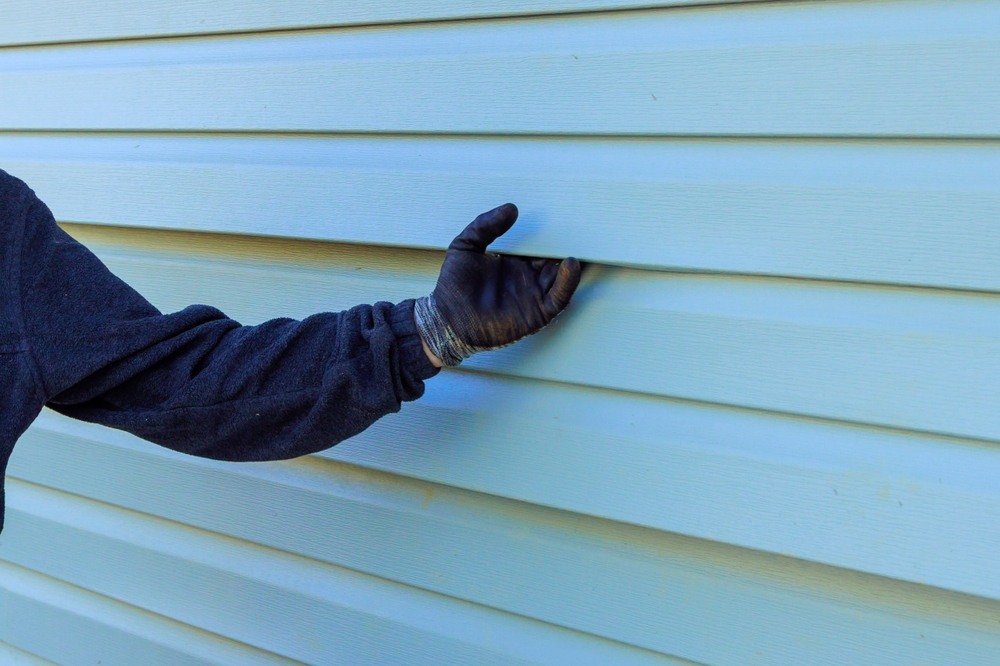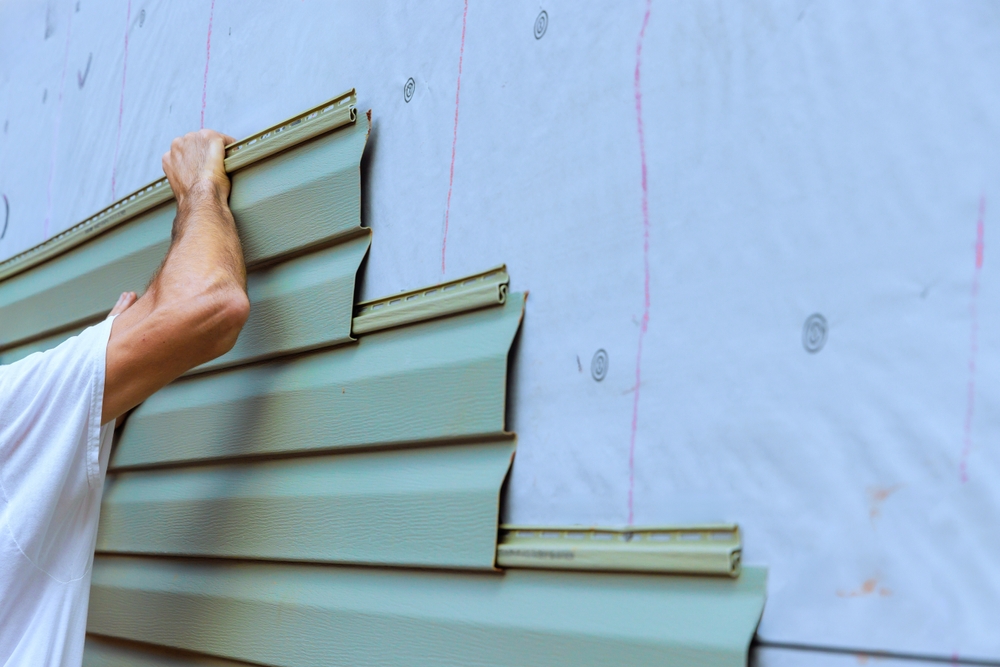For homeowners facing long, snowy winters, freezing temperatures, and intense sun at high elevations, choosing the right siding is more than just a cosmetic decision—it’s about protecting your home and maintaining efficiency year-round. Vinyl siding is popular for its affordability and low maintenance, but how well does it stand up to Truckee’s extreme weather? In this guide, we’ll explore the pros and cons of vinyl siding in cold climates, compare it to alternatives like Hardie Board, and provide expert tips to help you make the best choice for your home.
Understanding Vinyl Siding: Pros and Cons
Vinyl siding is popular across the U.S. for its affordability and low maintenance—but how does it really perform in harsh mountain climates like Truckee? Before deciding if it’s right for your home, it’s important to understand its fundamental strengths and weaknesses. Vinyl siding is a plastic exterior cladding made from polyvinyl chloride (PVC) resin, which gives it a unique set of characteristics.
Cost and Maintenance Benefits
One of the biggest draws of vinyl siding is its affordability. Compared to materials like fiber cement, wood, or brick, vinyl is significantly less expensive, both in terms of material cost and installation labor. This makes it an attractive option for homeowners working with a tight budget. Beyond the initial savings, vinyl offers considerable long-term value through its low maintenance requirements. It resists routine wear and is designed to never need scraping, staining, or painting. A simple cleaning with soap and water once or twice a year is usually all that’s needed to keep it looking fresh.
Aesthetic Options and Color Choices
The vinyl siding of today is far more advanced than the chalky, brittle panels of the past. Modern manufacturing techniques allow for a vast range of colors, textures, and profiles. Homeowners can choose from smooth finishes or embossed wood-grain textures that mimic the look of natural cedar. The color is baked into the material itself, not just painted on the surface, which means it won’t chip or flake away. This allows you to match your home’s aesthetic preferences without sacrificing the durability and low-maintenance benefits vinyl is known for.
How Cold Climates Affect Siding Materials
Truckee winters are no joke—heavy snow, ice, and freezing temperatures can take a toll on any exterior siding. The unique environmental pressures of a high-altitude, cold climate mean that not all siding materials are up to the task. Understanding these challenges is key to selecting a product that will protect your home for years to come.
Freeze-Thaw Cycles and Warping Risks
A signature feature of mountain climates is the dramatic temperature swing, not just from season to season but often within a single day. Siding can be baked by the afternoon sun and then drop to freezing temperatures overnight. This causes materials to expand and contract. This constant movement puts stress on siding panels, seams, and fasteners. Over time, this repeated freezing and thawing can cause some siding materials, particularly those that are less dimensionally stable, to crack, warp, or separate. These openings then become entry points for moisture, leading to much bigger problems.
Snow, Ice, and UV Exposure Challenges
Prolonged exposure to the elements presents another set of challenges. Heavy snow can pile up against walls for months, creating a constant source of moisture that can seep into any vulnerability. As it melts and refreezes, ice can form dams that push water up and under siding panels. Furthermore, the high altitude in Truckee means the sun’s ultraviolet (UV) rays are significantly more intense. This UV exposure can cause the color in siding materials to fade and can make certain plastics brittle over time, compromising their integrity.
Vinyl Siding Performance in Truckee Winters

So how does vinyl hold up in a place like Truckee? Let’s break down its strengths and weaknesses in the context of our demanding mountain climate. While vinyl has its benefits, its performance in extreme cold is a subject of debate and depends heavily on the quality of the product and the installation.
Durability in Heavy Snow Conditions
Quality vinyl siding is designed to be resilient and can resist moderate snow loads without issue. The panels are typically flexible enough to handle some pressure. However, in a place like Truckee where snow accumulation can be extreme, the weight of deep, wet snow can put significant stress on panels and fasteners. If the siding is not installed perfectly, this pressure can cause panels to detach or buckle. Ice dams are another concern, as they can force water behind the siding, where it can get trapped and lead to moisture problems.
Insulation and Energy Efficiency Considerations
Standard vinyl siding itself does not provide much insulation. The R-value (a measure of thermal resistance) of hollow-back vinyl is very low. This means that on its own, it won’t do much to keep your home warmer in the winter. However, you can significantly boost its performance by choosing insulated vinyl siding. These products feature a layer of rigid foam insulation fused to the back of each panel. This foam backing not only adds a substantial R-value to your wall system, helping to reduce heat loss, but it also makes the panels more rigid and impact-resistant.
Comparing Vinyl Siding to Hardie Board and Other Alternatives
For Truckee homeowners, durability, fire resistance, and aesthetics are key—so how does vinyl measure up against a top competitor like fiber cement? While vinyl is a viable option, it’s important to compare it to other materials designed specifically for harsh climates.
Longevity and Weather Resistance
This is where materials like fiber cement siding, often known by the brand name James Hardie, truly shine. Fiber cement is a composite material made of cement, sand, and cellulose fibers. It is incredibly dense and dimensionally stable, meaning it does not expand and contract nearly as much as vinyl during temperature swings. This makes it highly resistant to warping, cracking, and buckling, even in the most extreme freeze-thaw cycles. Because it doesn’t absorb moisture, it is also impervious to rot and deterioration from snow and ice, often outlasting vinyl in harsh climates.
Fire Resistance and Safety Factors
In a region like Truckee, which is prone to wildfires, fire resistance is a critical safety consideration. Vinyl siding is a plastic and will melt or burn when exposed to a significant heat source. In contrast, fiber cement is non-combustible. It will not ignite when exposed to direct flame and will not contribute fuel to a fire. This superior fire resistance provides an invaluable layer of protection and peace of mind for homeowners in high-risk areas.
Key Considerations Before Installing Vinyl Siding in Cold Areas
If you’re considering vinyl siding for your Truckee home, there are a few critical factors to keep in mind. Making the right choices here will ensure your home stays protected and your investment performs as expected for the long term.
Contractor Expertise and Local Experience
The performance of vinyl siding in a cold climate is almost entirely dependent on the quality of the installation. A contractor must understand how to properly fasten the panels to allow for expansion and contraction without creating gaps or causing buckling. Choosing a contractor who understands Truckee’s unique climate challenges is crucial for proper installation and long-term performance. An experienced local installer will know the best practices for sealing, flashing, and managing moisture in our environment, which can prevent catastrophic failures down the road.
Budget vs Long-Term Performance
Vinyl siding almost always offers a lower upfront cost. For homeowners on a strict budget, this can be the deciding factor. However, it’s important to think about the long-term value. While vinyl may save money initially, investing in more durable materials like Hardie Board can reduce maintenance and repair costs over time. A material that is more resistant to impact, fading, and warping may have a higher initial price but could offer a better return on investment over the life of your home.
Expert Recommendations for Truckee Homeowners
Our advice? Make informed choices based on your home’s specific needs, your budget, your aesthetic goals, and the realities of our local weather conditions. Every home and every homeowner is different, but some general principles apply.
Choosing the Right Material for Your Home
While high-quality insulated vinyl can be a suitable choice for some projects, we find that for many Truckee properties, fiber cement siding provides superior durability, safety, and long-term value. Its unmatched resistance to fire, moisture, and temperature fluctuations makes it an ideal material for our demanding mountain climate. It holds its paint better, resists impact from ice or debris, and maintains its structural integrity for decades, all while offering the beautiful appearance of natural wood.
Maintenance Tips for Cold Climate Siding
No matter which siding you choose, proper maintenance is key to its longevity. Regular inspections are essential. Check your siding each fall and spring for any signs of cracking, warping, or loose panels. Ensure the caulking around windows and doors is intact. During the winter, try to gently remove heavy snow accumulation from against your walls to reduce moisture load. Keeping your gutters clean is also vital to prevent ice dams and water overflow that can damage your siding.
Conclusion
Choosing the right siding for a Truckee home is critical for long-term durability, energy efficiency, and curb appeal. While vinyl siding can be a budget-friendly, low-maintenance option, its performance can be challenged over time by extreme cold, heavy snow, and intense UV exposure. For many homeowners in our region, fiber cement siding, like Hardie Board, offers superior weather resistance, fire safety, and longevity for mountain climates. By working with experienced, local contractors like Hexteriors and considering your home’s specific needs, you can select siding that protects your investment and keeps your home looking great for decades.




